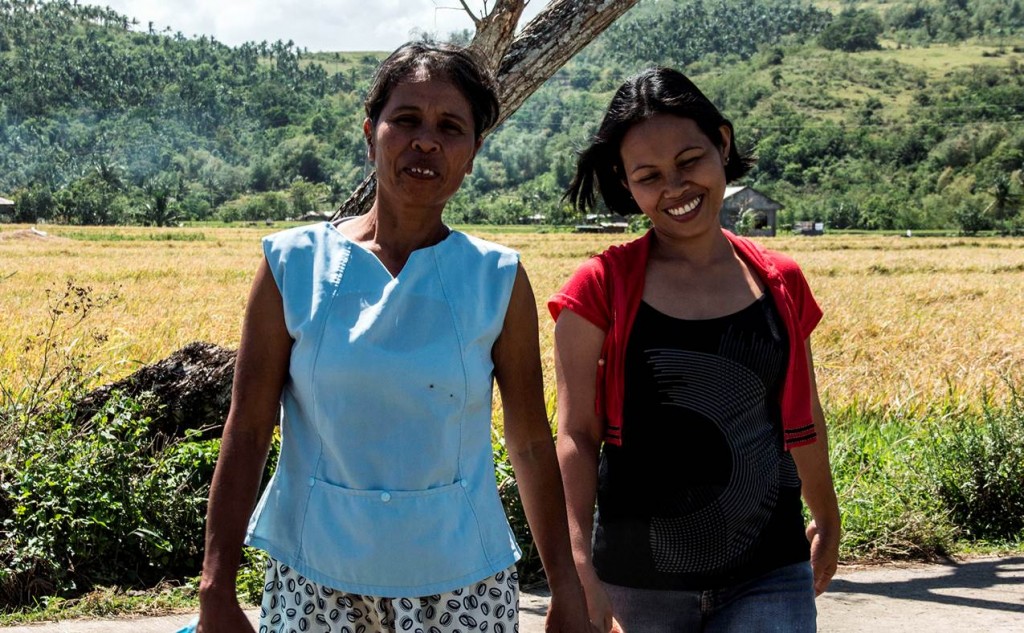
Construction safety has found an unlikely advocate in the form of Necita Mesa of Barangay Iyagan in Baao, Camarines Sur.
A widow, Necita volunteered to serve as one of the paid laborers in developing a pathway leading to and from her village. As one of the workers, she learned to shovel and bag the sand, arrange the bags, and provide assistance to the other people working on their access path, which they implemented through the Kapit-Bisig Laban sa Kahirapan-Comprehensive and Integrated Delivery of Social Services (Kalahi-CIDSS), one of the poverty alleviation programs of the Department of Social Welfare and Development (DSWD).
Kalahi-CIDSS seeks to alleviate poverty, improve local governance, and empower citizens using the community-driven development (CDD) approach, a strategy that involves people in local development processes so they have the voice and vote to identify and implement small-scale projects that would address their most pressing needs.
It was through her experience that Necita learned the importance of wearing personnel protective equipment (PPE) in the construction site. She dutifully wore socks, pants, long sleeves, and other protective gear while working on their sub-project, knowing firsthand what risks workers face in a construction area.
“Natutusok ang bitis ko ning gapo kaya mas gusto ko magsulog bota (I preferred to wear boots because rocks pierce the sole of my feet without these),” she said.
Kalahi-CIDSS provided a P2.47 million community grant for Barangay Baao for the construction of the pathway. Of this amount, P1.39 million came from the Millennium Challenge Corporation (MCC), an independent U.S. foreign aid agency created in 2004 to help achieve the Millennium Development Goals (MDGs) by helping countries promote economic growth.
The MCC provided a $120 million grant to Kalahi-CIDSS to support its CDD implementation. The DSWD program works with the Millennium Challenge Account-Philippines to manage the funds.
The MCC and Kalahi-CIDSS are particular about ensuring the safety of Kalahi-CIDSS volunteers working on their sub-projects. The program allocates budget for minimum PPE such as hard hats, hand gloves, rubber boots, and safety belts.
“The program strictly ensures that there are no accidents, diseases, and other harmful effects on the health of the workers during the construction period so that they can continue to work as scheduled and get paid for their services,” said DSWD Regional Office V Director Arnel Garcia.
When asked why she, who had no prior experience in construction work chose to become one of the laborers for their project, Necita had a simple answer: “Kaipuhan ko magsikap para sa mga aki ko (I need to sacrifice for my children).”
She said that she was offered the construction job by her fellow villager, who was one of the members of the Barangay Sub-Project Management Committee (BSPMC), which heads the Kalahi-CIDSS’ volunteers’ group. She took on the job because she just lost her husband, who was the main provider for their family.
Because of her hard work and that of her fellow villagers, their community now has improved access to get to and from her village because of the 1.71 km pathway. Her efforts allowed her to earn P252 per day, the same amount earned by the male laborers. Her income allowed her to purchase school supplies for her children, just in time for the school opening.
It is not just her children who will be able to learn through her efforts. Necita was not only able to learn of the importance of construction safety; she was also able to realize that she has the capacity to work and help provide for her family. ###


